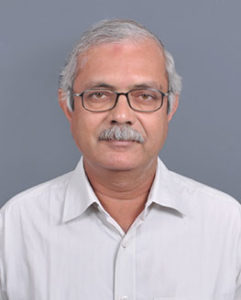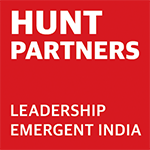K SrinivasMD & CEO, BTI Payments Pvt Limited
K Srinivas is a Mechanical Engineering graduate and a PGDM from IIM Bangalore.
Prior to joining BTI Payments, Srini was the President of Consumer Business at Bharti Airtel Limited, where he worked for over 11 years. As the President of Consumer Business, Srini was responsible for driving Airtel’s Mobile, Fixed line & Broadband, DTH and Airtel Money Businesses in India and South Asia. During this period he led Airtel’s transformation from being a voice centric business to a data enabled business through the launch of 3G/4G data networks. Some of the other key initiatives Srini spearheaded at Airtel were: the launch of Airtel Money, the launch of Airtel Srilanka, Airtel’s first Greenfield overseas venture, the launch of all the Greenfield circles in Eastern India etc. He was a member of the Airtel Management Board since 2009.
Of his over 27 years of rich working experience, Srini spent his early years in Britannia Industries Limited, and Hindustan Unilever Limited (HUL). During these years, he worked in various sales, marketing and business development roles across different profit centers and geographies. His last assignment in Hindustan Unilever was that of a Business Manager-New Ventures, where he was responsible for conceiving and developing a new rural business model “Project Shakti”, using micro credit and micro financing thro’ banks.

1. What was the mandate given to you by the Board when you took over in your role?
When I took on the role as the MD&CEO of BTI Payments, we just had an in-principle approval from RBI to launch White Label ATMs. The initial mandate was to define the strategy, build organizational capabilities around people, processes and technology, set up the partner eco system so that we can quickly get off the ground and launch our services in the market place. The intent was to build robust systems, business models and capability to rapidly scale up.
2. How much of that has been achieved? What were the challenges faced?
A lot and more of what has been planned has been achieved. According to our license conditions, we were obligated to roll out 1000 ATMs in the first year post the approval. This obligation was met two months ahead of schedule.
The biggest challenge faced was to staff the organization with the right skill set. Being a start-up company in a new domain meant that attracting the right talent was always going to be difficult. Selling the new concept of White Label ATMs to bankers, financiers and other players in the eco system was a secondary challenge. Driving business models that did not exist in this industry was a tertiary challenge.
3. How do you respond to the needs of changing market scenario (with an example)?
Strategies that one adopts have to be enduring and differentiating while being in sync with the changing market scenarios. In the ATM industry, interchange paid by a transaction acquirer is regulated. In the middle of 2014, the interchange was reduced by 20% necessitating us to recast our business model. This meant that we sought out a low cost, no frills-functional model without compromising on customer delight and trust. Through various measures involving business model re-engineering, we built an asset light model that is tuned to the new reality.
4. How has the market evolved in the last few years?
The ATM industry grew rapidly during the period 2008-12, when banks started to rely on outsourcing to enable speedier expansion. This spawned the birth of a large number of companies which specialized in providing ATM services. The industry discovered a new ‘pay per transaction’ model which encouraged these Managed Service Providers to scale up quickly. As the ATM became ubiquitous and the business very profitable, more players entered and very soon one saw pricing pressure erode margins. This meant that banks and the MSPs could not go beyond tier 1-2 towns. That’s when RBI came up with the concept of ‘White Label ATMs’ to drive expansion into rural areas where in non-banking entities were allowed to set up, own and operate independent ATMs, pretty much a trend one has seen in the rest of the world.
5. What are the key challenges your organization is facing currently? And what are the steps you are taking?
One and a half years and 1700 ‘India 1 ATMs’ later, we are still in a start-up mode. We are currently rolling out over 250 ATMs per month in the hinterland of the country. Managing any service in rural areas is a challenge with poor connectivity and infrastructure. For example, one of the biggest challenge for us is to keep the ATM up when you don’t have power for over 16 hours a day. Driving innovation in the way do things is the only solution to overcome these challenges. At BTI, we are exploring several non-conventional routes to achieve our objectives.
6. What is your talent strategy? How do you draw the balance between home grown vs lateral hiring at the leadership level?
We are in the business of providing various financial and payment services to our customers. Customer trust and delight is central to our philosophy. To achieve this and to drive this tenet across the organization, we have relied on sourcing people who have worked in various service domains like telecom, insurance, banking etc. In addition, as a strategy we are investing heavily in front end service delivery capability. Even the leadership team is drawn from the service industry to a large measure..
7. How does your organization identify and develop future leaders?
At BTI, we believe that deep rooted process orientation and people empowerment is key to delivering customer delight on a consistent basis. Premium is on those who have the ability to innovate consistently. Future leaders are those who aren’t scared of trying new methods.
8. What are the 3 key aspects you look at when you hire your direct reports?
“Self-drive, right balance between professional and entrepreneurial capability (no, the two are not opposites), thinking big while being hands on” are the three aspects that I look at when hiring my direct reports.
9. How does the growth prospect of your organization look like for the next 12-24 months?
Payments domain is hugely under penetrated in the country. With the Government and the policy makers being very serious about driving financial inclusion, we see that the next 12-24 months are going to be very exciting. In a way, this domain today is where telecom was in 2005!
10. Will there be any significant change in the market dynamics in next few years? If so, what steps are you taking for the same?
We see virtual infrastructure coming up in a big way. ATMs will bridge the reach gap of the ‘brick and mortar’ financial institutions We also see mobility (virtual bank accounts) playing a massive role in driving financial inclusion. Convergence of various forms and types of payments will be the other key theme to watch out for. At BTI, we are investing technology upfront so as to future proof ourselves as much as possible. For example, all our ATMs are enabled with bio metric readers even though we don’t use them currently.
11. How do you define & practice leadership?
To me a leader is the one who imagines a larger picture and coaches his/her people to actually paint the same. A true leader has to continuously keep doing this day in and day out. To make his/her people aspire for a lot more than what they are capable of energizes the entire eco system into a virtuous cycle of excellence. I practice this by being accessible to the team all the time, by raising the bar all the time and play my role as a coach and mentor rather than a boss.
12. What are the 3 most pivotal moments in your career that you either learned from and/or that got you where you are today?
Conceptualizing, testing, implementing and scaling up “Project Shakti” at Hindustan Unilever was one of the pivotal moments in my career. This was my first go at building a business from scratch. Working with rural folks to build small enterprises was both a challenging and a humbling experience. It gave me enormous learning in practically all aspects of business
Leading the launch of Airtel Sri Lanka, Airtel’s first green field venture outside India was another defining moment. Appreciating and accepting cross border cultural values, tackling the uncertainties and hostilities in alien markets, are lessons that I cherish deeply.
Leading the integrated consumer business (mobile, broadband, DTH) for Airtel in India, Sri Lanka and Bangladesh was yet another pivotal moment. Lessons learnt on managing scale, dealing with hyper growth, embracing rapid advances in technologies are lessons immensely valuable to me to date.
13. What message would you like to share with young professionals at the start of their career?
Experiencing diversity early on always helps. Hands on experience in diverse geographies, diverse functions, diverse domains, diverse cultures, diverse complexities etc. helps one to manage these diversities much better later on in one’s career. Dipping one’s toes in diversity teaches one humility, patience, and ambidexterity, facets so essential for being successful later on.
